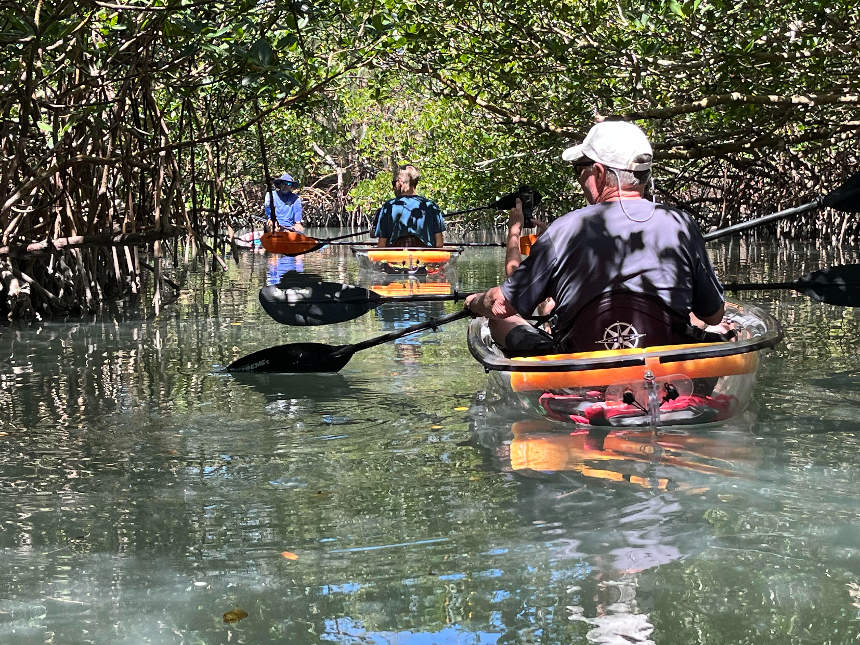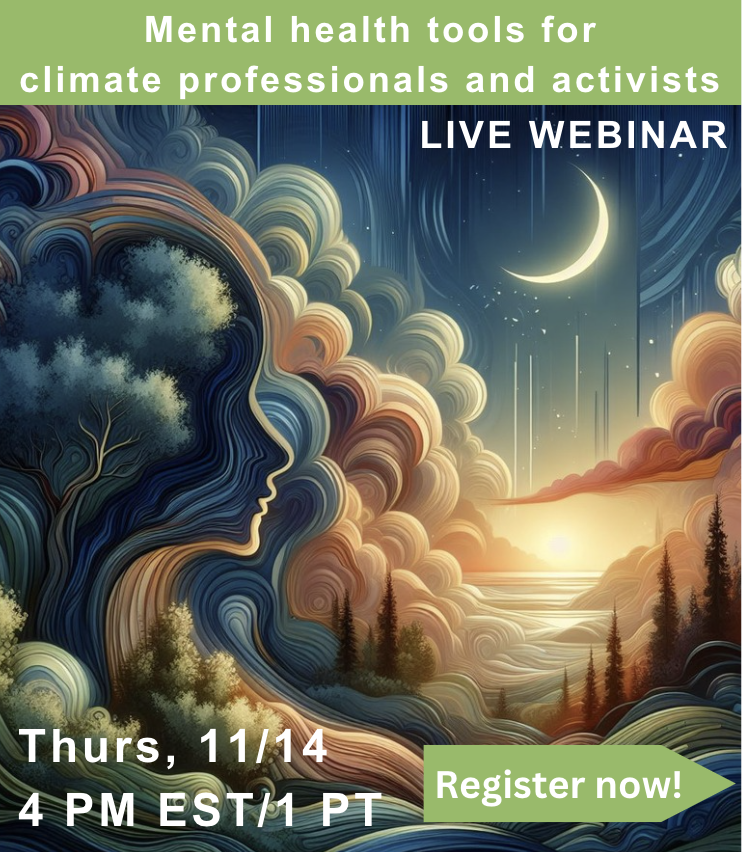Sign up for daily news updates from CleanTechnica on email. Or follow us on Google News!
The 16th Conference of the Parties (COP16) to the UN Convention on Biological Diversity is now well underway in Cali, Colombia, bringing together nearly 190 nations. They’re gathered to find answers to the critical challenge of halting ever-increasing biodiversity loss, investigating its relationship with the climate crisis, and enhancing the overall health of the planet. With the backdrop of vanishing habitats and nearly a million species threatened with extinction, COP16 draws to a close.
This COP is particularly significant, as it is the first since the adoption of the Kunming-Montreal Global Biodiversity Framework at COP15. (Only the US government officials wear badges at COP16 with the descriptor, “non-party.” You see, the US isn’t a member of the original treaty.) COP16 will further develop the monitoring framework and advance resource mobilization for the Global Biodiversity Framework, and parties to the Convention are expected to show the alignment of their National Biodiversity Strategies and Action Plans (NBSAPs) with the Framework.
The key overarching question this year is how countries intend to fulfill their pledge to protect at least 30% of the world’s land and water and restore 30% of degraded ecosystems by 2030.
At this writing, the agreement to protect nature and halt biodiversity loss is still being finalized. From redirecting environmentally harmful subsidies to mobilizing $200 billion annually for conservation efforts, the COP16 to-do list is extensive and a bit daunting. How will countries at COP16 translate their promises into concrete actions on the ground? Measures of success will balance tenuously on the wherewithal of countries to enact and adhere to new commitments.
The potential of ecosystem-based interventions, also known as nature-based solutions, for disaster risk reduction and climate change adaptation is now recognized by major national and international policies and agreements, according to research at the University of Massachusetts. When such interventions, in which an ecosystem is either preserved, sustainably managed, or restored to provide benefits to society and to nature, take place, positive results occur. Nature-based solutions have been proven to consistently be a cost-effective approach to mitigating environmental hazards.
A classic example is restoring wetlands to address coastal flooding rather than constructing a seawall. The ecosystem-based interventions most frequently found effective in mitigating hazards are associated with mangroves (80%), forests (77%), and coastal ecosystems (73%).
Possible Solutions Emerging from COP16 Talks
A discussion paper launched by the global ENACT Partnership at COP16 outlines three policy proposals that the authors say should be implemented to ensure that nature-based solutions (NbS) can effectively address the interconnected challenges of climate change, biodiversity loss, and land degradation. The paper advises that governments should:
- integrate clear and measurable NbS targets into their national strategies under the three Rio Conventions;
- scale up financing for NbS through dedicated funding plans that offer enhanced access to funding for chronically underserved and marginalized groups and do not compromise current financing under the Rio Conventions; and,
- ensure full and inclusive participation in NbS planning and decision-making from Indigenous Peoples, local communities, women, youth, and other groups in vulnerable situations.
A key challenge under agenda item 25, focusing on biodiversity and climate change, is paragraph 5, which aims to optimize co-benefits and synergies in financing while avoiding double counting of biodiversity and climate funds. Developing countries, in particular, have raised concerns that double counting could reduce overall financing for their biodiversity and climate initiatives.
The Nature Conservancy has designed Nature Bonds projects, which are characterized by robust, legally binding conservation commitments that are tied to a debt conversion transaction. Long-term conservation and climate partners support national governments in their planning efforts, such as developing Marine Spatial Plans, and the implementation of Nature Bonds projects through direct investments and technical assistance in science and policy.
These investments support communities, protect nature, address climate change, and preserve the well-being of land, ocean, and freshwater ecosystems. The debt conversion component of a Nature Bonds project aims to refinance a country’s commercial debt to generate new funding for conservation and/or climate.

Collaboration With Indigenous Tribes Critical To Addressing Overall Ecosystem Health
UN Secretary-General António Guterres described COP16 as an opportunity to “make peace with nature” and turn the Kunming-Montreal Global Biodiversity Framework into a lived reality. Known as the “people’s COP,” it emphasizes inclusive, equitable nature-based solutions that are co-designed and implemented in close collaboration with indigenous peoples and local communities (IPLCs).
Why is it important to include the voices of indigenous peoples and local communities? IPLCs are the primary stewards of biodiversity. An expóse from the Boston Globe helps to unpack the question.
Harvard Forest is a 4,000-acre living laboratory that was once the hunting ground of the Nipmuc tribe. Located in Petersham, a small rural town in north central Massachusetts, the location is site for research into the red-tailed hawk in the Eastern United States. What’s unusual is that this is a collaboration, one of a handful of examples of prominent institutions in Massachusetts blending their own research strategies with Indigenous knowledge in an effort to better protect vulnerable ecosystems from the effects of climate change. Harvard Forest ecologist Neil Pederson, who has studied the impact of climate change on forests in the Eastern United States for more than three decades, said he was eager to lend his expertise to the Harvard Forest’s research project and better understand Indigenous approaches to ecology.
As top predators, hawks play a critical role in maintaining the predator-prey dynamics of woodlands, controlling the small mammal population and preventing other smaller animals from venturing beyond their native habitats and further disrupting the ecosystem. While Western tradition has historically treated the symptoms, such as by trying to increase particular populations within a habitat, the Indigenous approach looks more broadly at the entire ecosystem as a family network. Could it be that the problem isn’t actually the hawks’ food source, but the trees where it likes to nest? Or if there are fewer rabbits, why? Did something happen to the grasses they usually eat? Have they been struck by a disease? If so, where did it come from, and it is affecting squirrels and mice, too?
“Tribal land management is an essential part of how we’re looking towards climate resiliency,” said Oleander Stone, the state’s deputy director of climate equity and environmental justice. “Land management is so much more than how we deal with invasive species. It’s about relationship building: how we build relationships with land, and how we build relationships with our past in order to build a more resilient future.”
Along with Indigenous fellowships and research partnerships at universities including Harvard and MIT, state climate officials are also providing funding for municipal governments and local tribes, such as the Wampanoag in Mashpee and the Mohicans in Stockbridge, to address ecological challenges in their region. Stockbridge Select Board member Patrick White said he believes Indigenous land management strategies, which tend to favor restoring native plant species over introducing new ones, will offer valuable tools for the town’s future conservation and restoration practices in its woodlands.
From reversing harmful algae blooms in wetlands to tackling invasive species in woodlands, there is a growing understanding among policymakers and researchers that collaboration with Indigenous tribes is critical to addressing the overall health of an ecosystem.

Chip in a few dollars a month to help support independent cleantech coverage that helps to accelerate the cleantech revolution!
Have a tip for CleanTechnica? Want to advertise? Want to suggest a guest for our CleanTech Talk podcast? Contact us here.
Sign up for our daily newsletter for 15 new cleantech stories a day. Or sign up for our weekly one if daily is too frequent.
CleanTechnica uses affiliate links. See our policy here.
CleanTechnica’s Comment Policy




